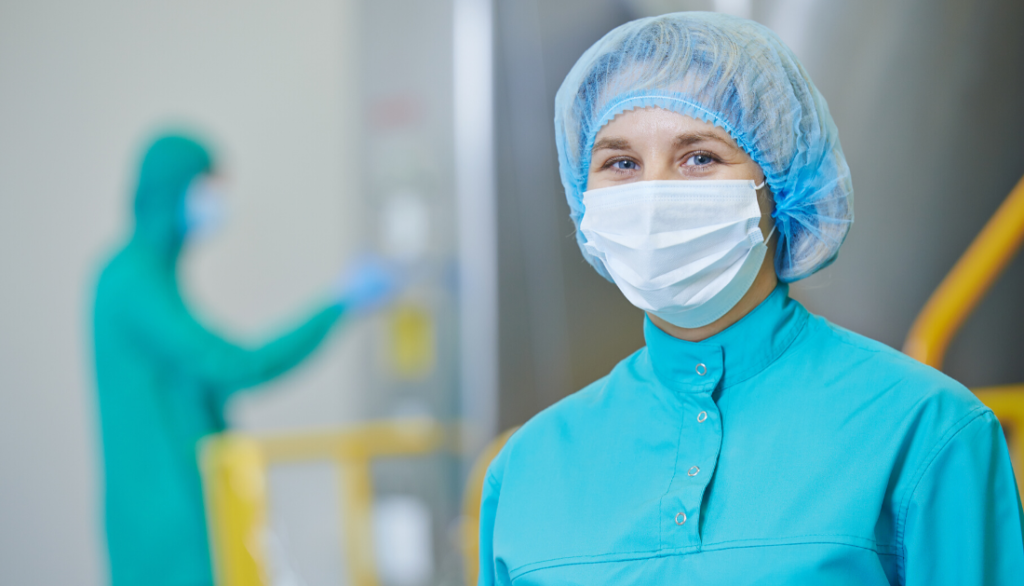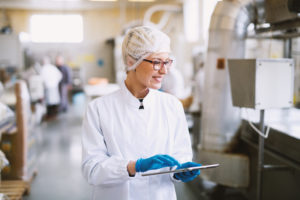
Blog
How CPG Can Adapt, Communicate and Innovate
This year’s COVID-19 crisis has permanently changed the way we do business. From communicating with employees on the latest safety guidelines to deciphering actions from federal, state and local agencies, the pandemic has shifted the business landscape for every industry, especially the essential work of CPG.
Richard Carlson, vice president, quality management of Hormel Foods Corporation; Tom Culross, vice president, environment, health and safety of Conagra Brands; and Kristy Meringolo, senior vice president and general counsel and chief compliance officer of the Hain Celestial Group, joined the Consumer Brands Association for the latest CPG Speaks session, Managing Local Outbreaks, to discuss their experiences and the lessons they learned this year and their predictions for how it will affect the future.
Always Be Prepared to Adapt and Evolve
The industry is no stranger to managing operations through a crisis, whether it’s H1N1 or a natural disaster. When news began to emerge about the pandemic in China, CPG companies were largely focused on how it could affect international business and preparing for its overseas impact. But that quickly changed as the virus made its way to Europe — a sure sign of what was to come for the United States.
“I never could have imagined that this would evolve into a global pandemic, impacting the lives of so many,” said Meringolo. “At first, the amount of information we had available was evolving each day. As we went on, we made sure that we were memorializing what we were doing, learning from each other and establishing the best practices we could with the information we had available at the time.”
“We’ve been working collaboratively with the local authorities in the communities in which we operate, responding to questions and making sure that our protocols and processes in place are consistent to what they’re expecting.”
The complexities and unknowns of the coronavirus gave way to confusion, and as information about the virus changed, so too did guidance from health officials.
“In the beginning, we had more difficulty trying to engage with the local authorities and I think some of that was those health departments being overwhelmed,” she said. “Throughout the crisis, those relationships have become more proactive rather than reactive and we’ve been working collaboratively with the local authorities in the communities in which we operate, responding to questions and making sure that our protocols and processes in place are consistent to what they’re expecting.”
Communication is Key
Whether with employees, health officials or consumers, constant communication and transparency is essential to working through a crisis.
“Our communication flowed outward with our employees,” said Carlson. “We were committed to having full transparency of everything that was going on in our company so that we could help manage the anxiety people were feeling as the pandemic was really ramping up.”
To help give accurate and timely information about the pandemic, Hormel launched Keep COVID Out — an initiative designed to educate employees about ways to minimize the spread of the virus, both in the workplace and at home. These materials were offered in a range of languages and free-of-charge to anyone who wanted them.
“It’s part of how we strive to be a great neighbor and a great partner in the communities where we live and work, which is why we chose to translate resources into 10 different languages and make them available for a wide audience,” said Carlson.
“It’s part of how we strive to be a great neighbor and a great partner in the communities where we live and work, which is why we chose to translate resources into 10 different languages and make them available for a wide audience,” said Carlson.
Design Safety Protocols for the Future
COVID-19 has brought many changes to the industry, many of which may be implemented for the long term. A heightened emphasis on health and safety has always existed within CPG manufacturing, but now with added temperature checks, social distancing and other preventative health measures, the future looks a little different, especially as we think about the future of manufacturing.
“We’re in the process of designing a new facility and are currently evaluating how to lay out a main hallway that employees walk down,” Culross said. “How do you design your timeclocks? How do you design locker rooms? It’s interesting to design a new facility in a COVID-type environment, and for whatever the next COVID is.”
Even after the pandemic is over, these new procedures and habits will likely become commonplace, as we adjust to a world where sanitizing stations are the norm and a greater emphasis is placed on health throughout all parts of society. CPG is already planning for that future and trying to predict what’s coming up next, in a world that’s anything but predictable.
“As we’ve gone through this, protecting employees has been our basic value and that’s been very helpful as things evolve.”
“It’s been an interesting opportunity to try to predict where we’re going to be — do we build this for a year from now or for 10 years from now?” Culross asked. “But as we’ve gone through this, protecting employees has been our basic value and that’s been very helpful as things evolve.”
Visit our website to learn more about CPG Speaks and to register for an upcoming session. CPG Speaks is complimentary for attendees, thanks to PwC and individual session sponsors.
Published on August 31, 2020
Our Updates, Delivered to You
Receive the latest updates from the Consumer Brands Association.



